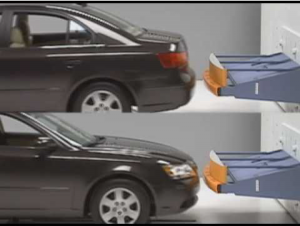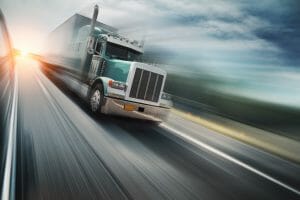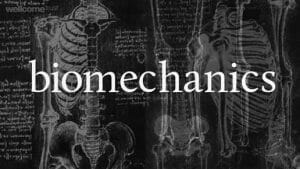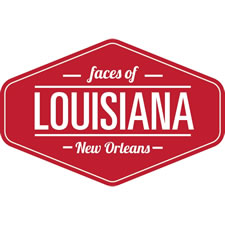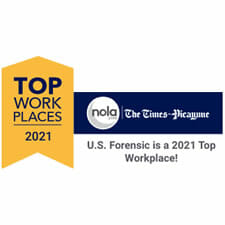Our experts are here to help you evaluate a low-speed impact, sometimes referred to as “minor impact” cases. These cases can be challenging, but our approach has proven successful. Timeliness and expert selection are key.
Current Challenges
Importance of Securing Evidence in a Low Speed Impacts….Early
This holds true today (as it did in the past): evidence fades over time. What may seem minor and unremarkable now may end up being a big deal later. In low-speed impact cases, photos taken after the incident are very helpful. However, taking the additional step of investing in acquiring the imaged crash data could prove extremely valuable. The electronic data recorders (EDR) or electronic control modules (ECM) are what some refer to as the “Crash Data Recorder” or “Black Box.” These devices record speed, braking, acceleration, and other data such as vehicle occupancy during an event. Considering the relatively low cost of this type of service, downloading this imaged data may generate a great return on investment down the road.
Discontinuance of Important IIHS Testing
Bumpers used to be mounted to the vehicle with shock absorbers called impact isolators. These isolators were piston and cylinder assemblies that would compress when impacted. As it compressed, the piston would become scarred, which was measurable. Automotive manufacturers abandoned that design due to inefficiencies. The industry moved toward a honeycomb cell and styrofoam energy absorber design, which is almost universal in passenger cars today. The problem for investigators is that there is no way to quantify the amount of damage to either the honeycomb or the styrofoam. In many instances, they will show no damage at all.
The Insurance Institute for Highway Safety (IIHS) began testing bumpers by rolling cars into bumper barriers at a speed between 5 and 8 mph. The damage was photographed, videotaped, and assessed by two independent parties. Their reports were reconciled and the results published. This was great! There was crash test data to reference. However, they discontinued that testing in 2010. Now, almost all of the newer model vehicles are designed differently than those used when crash tests were conducted; therefore, the test results do not apply.
What Now?
Our Approach
There are other engineering techniques that can be used to analyze low-speed impacts, but having crash test data was the gold standard. The good news is that since 2013, all vehicle EDRs are required to record events with a Delta-V greater than 5 mph. All vehicles are also required to record front and rear events. This is very useful in evaluating low-speed claims. Due to this requirement, no recorded data implies a Delta-V of less than 5 mph. This information is extremely useful in assessing injury potential. Also, the data is recorded within the vehicle during the actual event, which makes crash data pale in comparison.
Accident reconstructionists and mechanical engineers evaluate crash data and any physical damage to reconstruct the event and determine if the damage is consistent with what is being claimed. If quality photographs are taken after the incident, engineers can utilize tools such as photogrammetry to complete the evaluation without inspection of the vehicles. Although not always feasible, a site inspection is always preferred.
Low-Speed Impacts Involving Tractor Trailers
For low-speed impact cases involving tractor trailers, there are tools available such as the ECM (which is basically the EDR of big trucks), and many tractor trailers are equipped with active safety system modules. These systems produce video that can be analyzed after an incident. For major impact cases involving passenger or commercial vehicles, our engineers utilize drones for aerial images, and 3-D laser scanners for capturing 3-D images of the vehicles and accident scene. Using these tools, an animation can be created to provide a visual account of the collision.
When the Stakes are High
Real-Time Reconstruction
If a case requires an in-depth investigation, a real-time reconstruction of the collision utilizing exemplar vehicles is an option. By conducting this type of reconstruction, our experts provide a visual of the actual impact. This can be powerful in illustrating what damage would or would not be present at a given speed, given documented circumstances. It can also provide information as to the occupant’s response. Below is a reenactment of a heavy truck impacting a passenger vehicle at 4 mph. The same make and model of the truck and passenger vehicle involved in the collision case were used in the reenactment.
Below, you will see the occupant’s response to the 4 mph impact.
Research & Testing
In addition to reenacting the accident, testing and research may provide the data needed to solidify a case. U.S. Forensic engineer, Matt Ivory, P.E., and colleagues conducted research on low-speed impacts. They submitted two research papers that were published by SAE (Society of Automotive Engineers) – “Steering Column Loads and Upper Extremity Motions During Low-Speed Rear-End Collisions,” and “Brake Pedal Response and Occupant Kinematics During Low Speed Rear-End Collisions.”
Biomechanical Engineers – The Misunderstood Expert
On occasion clients have stated, “I’d like to hire a biomechanical engineer in this case, but I’ve heard that I need a doctor to testify.” Yes, a physician is needed to determine the correct diagnosis and treatment of an injury. However, a biomechanical engineer is educated and trained on how the human body responds to specific forces. They can determine if a particular injury could have happened given the speed, angle of impact, positioning of the body, and other factors. Do the laws of physics indicate that this is possible? Depending on what you are needing to determine will dictate which type of expert is warranted.
To account for the fact that courts differ (based on the area of the country) on the value they put on biomechanical analysis, U.S. Forensic utilizes a different expert for the accident reconstruction calculations and the biomechanical analysis. If, for some reason, the biomechanical component is not accepted, there is still an avenue to submit evidence as it relates to the accident reconstruction. This strategy has been extremely effective and has led to successful litigation outcomes.
Finding the Appropriate Resources
U.S. Forensic offers accident reconstructionists, mechanical engineers (many who possess ASE Master Technician Certifications), and biomechanical engineers. These experts assist with accident reconstruction, low-speed impact investigations, and mechanical failures. We serve our clients from 58 locations across the United States. Visit our Coverage page to find a licensed or certified expert in your state.
Featured Experts for this Forensic Service
| Name | Title |
|---|---|
| Gabriel Alexander, P.E., ACTAR | Professional Engineer / Accident Reconstructionist |
| Sean Bryant, ME | Biomechanical Engineer & Reconstructionist |
| Daniel Cross, P.E., ACTAR | Professional Engineer / Accident Reconstructionist |
| Mark Droubie, P.E., ACTAR | Professional Engineer / Accident Reconstructionist |
| Jeremy Hoffpauir, P.E., ACTAR | Professional Engineer / Accident Reconstructionist |
| John Laughlin, M. ENG., P.E. | Professional Engineer / Biomechancical |
| Chris Owens | Accident Reconstructionist |
